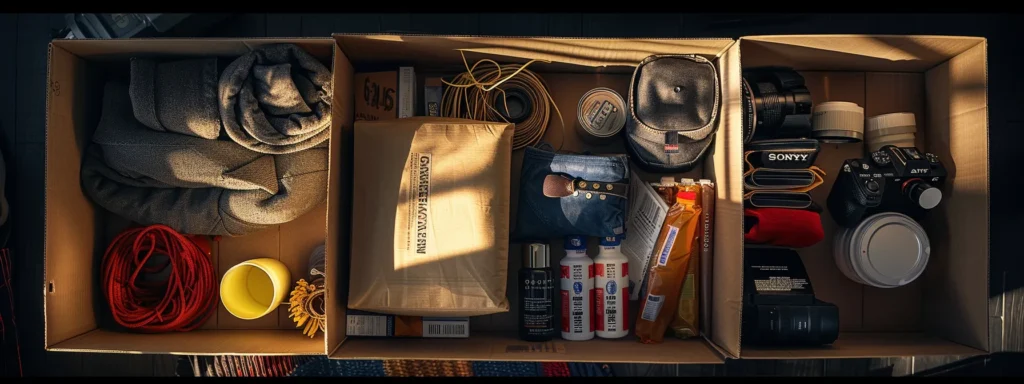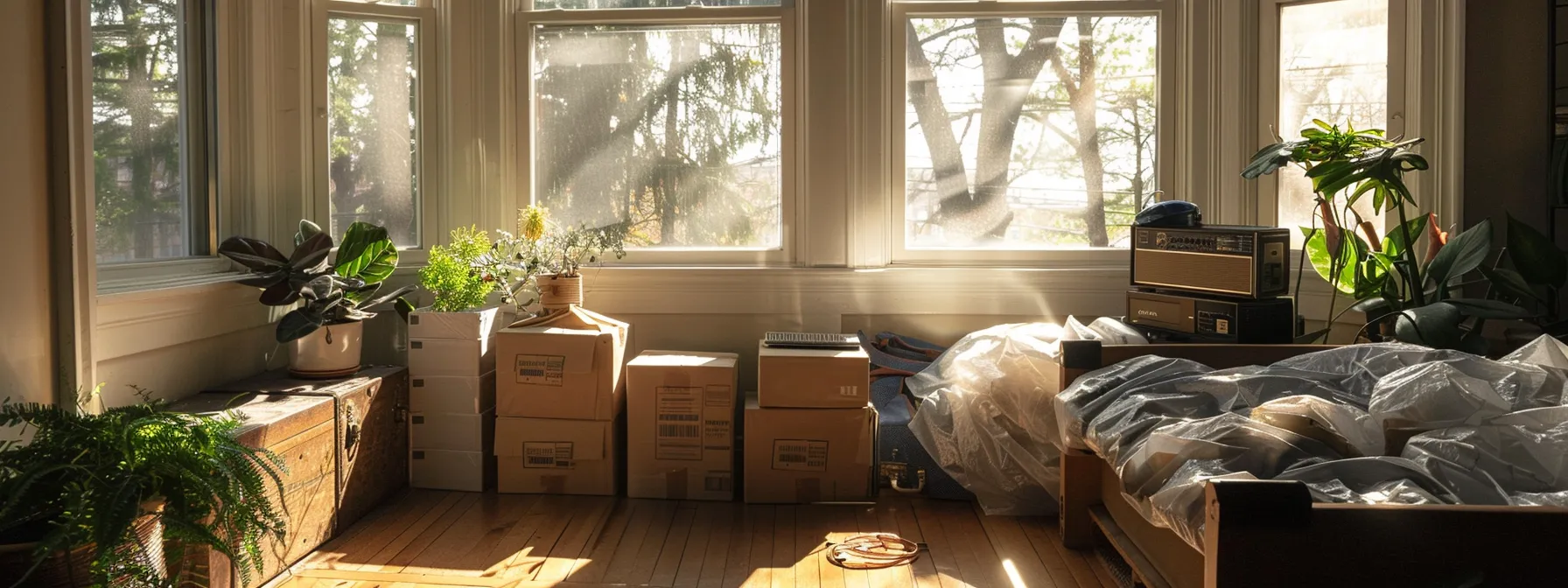Table Of Contents:
- Comprehensive Packing Checklist for Effortless Local Moves
- Start Your Local Move With a Solid Plan
- Create a Moving Checklist to Stay Organized
- Set a Realistic Timeline for Packing Tasks
- Allocate a Budget for Packing Supplies and Services
- Notify Important Parties of Your Move
- Gather All Necessary Packing Supplies
- Compile a List of Essential Packing Materials
- Find Affordable Sources for Boxes and Materials
- Consider Eco-Friendly Packing Options
- Keep Tools Handy for Disassembling Furniture
- Declutter and Organize Before Packing
- Declutter and Organize Before Packing
- Sort Items by Keep, Donate, or Dispose Categories
- Host a Garage Sale to Reduce Clutter
- Recycle or Safely Dispose of Unwanted Items
- Organize Belongings for Efficient Packing
- Pack Room by Room for Efficiency
- Begin With Least Used Rooms and Items
- Label Boxes Clearly With Contents and Destinations
- Use Color-Coding Systems for Easy Identification
- Keep Similar Items Together to Simplify Unpacking
- Protect Your Belongings With Proper Packing Techniques
- Protect Your Belongings With Proper Packing Techniques
- Wrap Fragile Items Carefully to Prevent Damage
- Use Appropriate Padding for Furniture and Appliances
- Secure Boxes With Quality Packing Tape
- Pack Heavy Items in Small Boxes to Avoid Overloading
- Prepare for Moving Day Essentials
- Prepare for Moving Day Essentials
- Pack an Overnight Bag With Necessary Items
- Keep Important Documents Accessible
- Charge Electronics and Prepare Chargers
- Arrange Care for Children and Pets on Moving Day
Comprehensive Packing Checklist for Effortless Local Moves
Moving can often feel overwhelming, especially when you consider the costs associated with renting a moving truck or hiring a local moving company. This comprehensive packing checklist for effortless local moves provides a straightforward approach to organizing your packing process. We’ll cover how to gather essential supplies, declutter your home, and pack efficiently room by room. By following these guidelines, you’ll minimize stress and ensure your belongings are well-protected, making your move smoother and more cost-effective. Let’s tackle those moving day challenges together.
Start Your Local Move With a Solid Plan
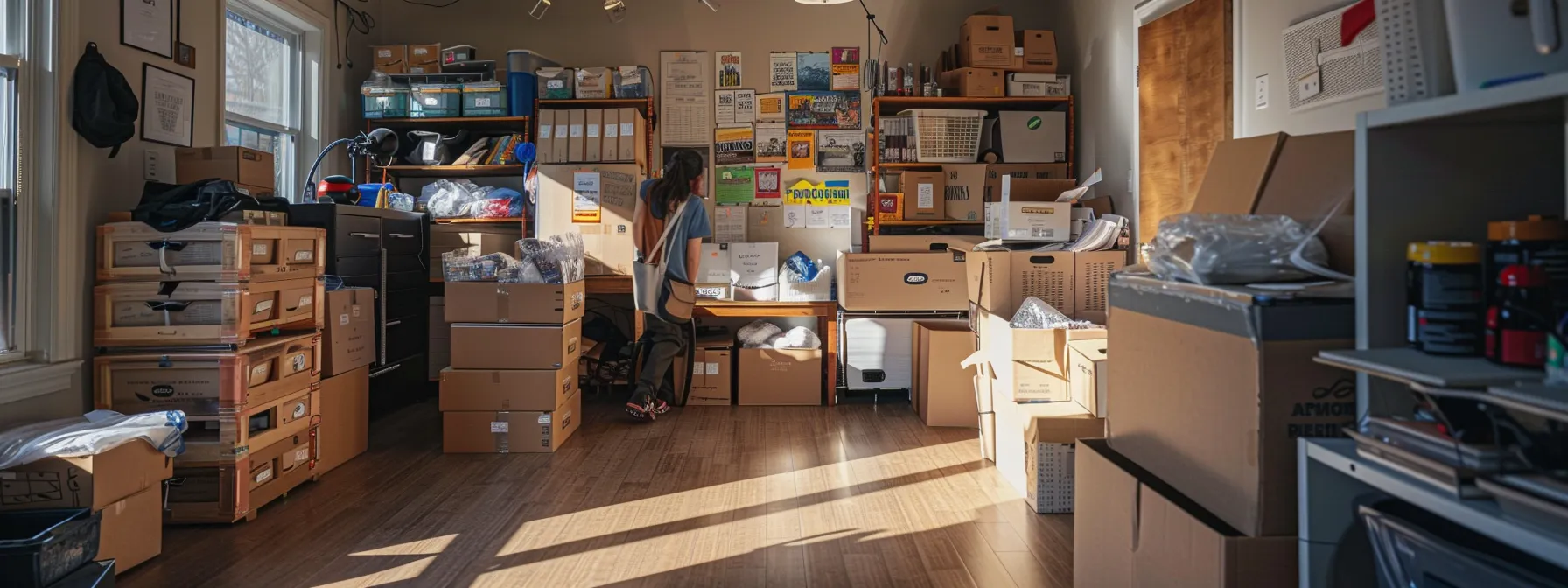
To kick off your Local Moving Services move effectively, I recommend creating a detailed moving checklist that keeps you organized and on track. Setting a realistic timeline for your packing tasks is essential, as is allocating a budget for supplies like bubble wrap and boxes. Don’t forget to notify important parties, including your estate agent, to ensure a smooth transition. These steps will streamline your move and make it more manageable.
Additionally, addressing the packing of specific items, like protecting your liquor and electronics, and stocking up on essentials such as toilet paper will round out your preparation. Let’s explore each of these topics in detail to make your move effortless.
Create a Moving Checklist to Stay Organized
To stay organized during your local move, I emphasize the importance of creating a comprehensive moving checklist. This checklist should include tasks like gathering necessary moving supplies, confirming your moving services, understanding any potential fees, and addressing the security deposit at your new place. By listing these items, I’ve found it helps keep everything on track and ensures nothing important gets overlooked, making your move much smoother.
| Task | Description |
|---|---|
| Gather Moving Supplies | Collect boxes, packing tape, bubble wrap, and markers for labeling. |
| Confirm Moving Services | Reach out to your chosen moving company to finalize the details. |
| Understand Fees | Inquire about any hidden fees associated with your move. |
| Security Deposit | Ensure you know the required security deposit for your new residence. |
Set a Realistic Timeline for Packing Tasks
Setting a realistic timeline for packing tasks is crucial for a smooth local move. I always advise breaking down the process into manageable chunks over a series of days or weeks, depending on how much time you have before the moving day. Local moving companies often recommend allocating time to sort and declutter, allowing you to focus on the essentials without feeling overwhelmed. This might mean starting with one room at a time and ensuring you stay organized, especially if you’re coordinating with movers or van lines for transportation:
- Assess workspace and necessary packing materials.
- Dedicate specific days to packing items room by room.
- Schedule time for donations, like coordinating with The Salvation Army for any items you no longer need.
- Finalize packing a day or two before the movers arrive to keep everything streamlined.
Allocate a Budget for Packing Supplies and Services
Allocating a budget for packing supplies and services is essential for a successful local move. I recommend setting aside funds not only for materials like boxes and tape but also for hiring a reliable moving company. Additionally, consider organizing a garage sale to declutter your pantry and other areas, which will help offset moving costs while making your transition smoother. Understanding fees outlined in the bill of lading can also prevent unexpected expenses, ensuring that your budget aligns with your moving needs.
Notify Important Parties of Your Move
Notifying important parties of your move is a key step in ensuring a seamless transition during your local moving process. I recommend reaching out to your utility providers, banks, and tax services to update your address and arrange for final bills. Don’t forget to inform your vehicle registration office of your new address, as this is essential for maintaining accurate records. Additionally, if you live in a building with an elevator, notify the property management to reserve it for your moving day, ensuring efficiency and preventing delays.
- Notify utility providers about your move.
- Update your address with banks and tax services.
- Inform the vehicle registration office of your new address.
- Reserve the elevator if you’re moving to a building that requires it.
With your plan in hand, it’s time to gather the tools for the journey ahead. The right packing supplies will make all the difference in keeping your belongings safe and organized.
Gather All Necessary Packing Supplies
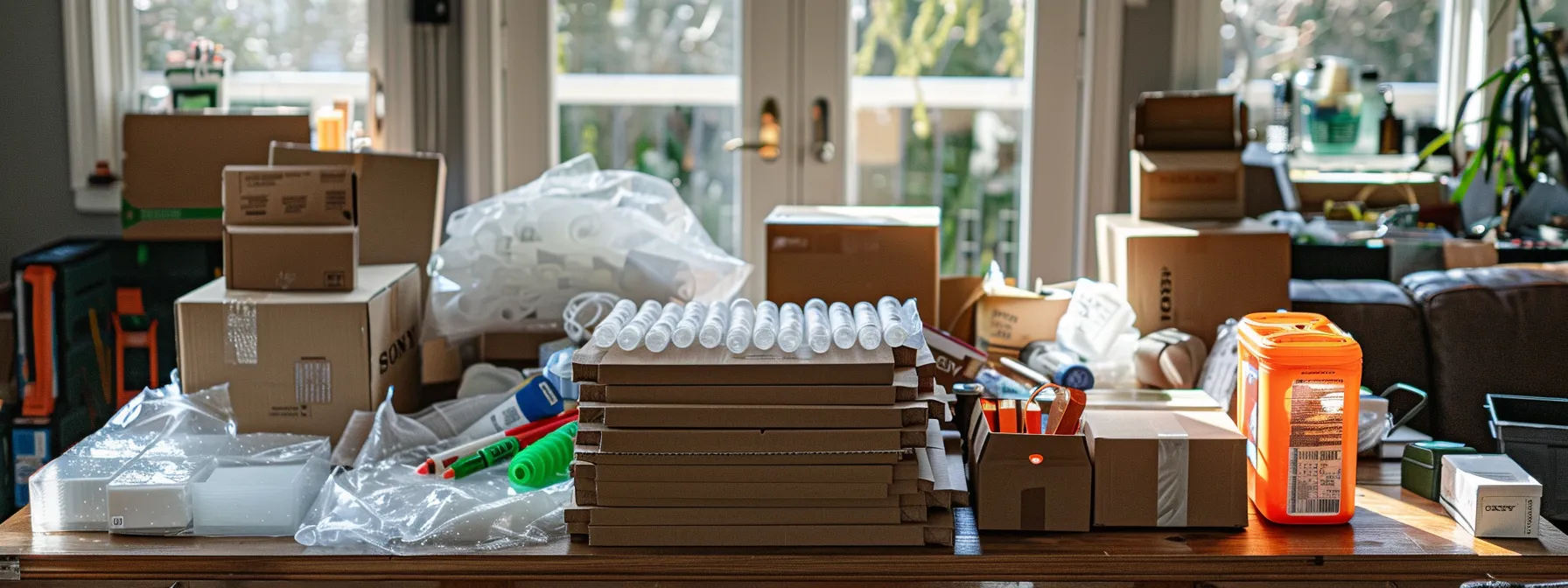
When preparing for a local move, I find it essential to gather all necessary packing supplies to streamline the process. Start by compiling a list of essential packing materials, and be sure to check for affordable sources for boxes, whether it’s from local stores or online. I also recommend considering eco-friendly packing options, such as recycling materials, to minimize waste. Additionally, keeping tools handy for disassembling furniture ensures that everything is ready for transport.
These steps will help you move efficiently, covering the essentials while keeping costs in check. Now, let’s dive into each topic in more detail to make your packing experience as seamless as possible.
Compile a List of Essential Packing Materials
When compiling a list of essential packing materials for your local move, it’s crucial to think practically about your specific needs. Consider your packing policy and how to handle delicate items by including bubble wrap and sturdy boxes. Don’t forget to have suitcases ready for immediate essentials, especially if your new home requires navigating stairs. This foresight can save time and effort during the moving process, ensuring that you’re prepared for anything that comes your way. By working with reputable moving companies, I’ve seen that being well-equipped with the right supplies makes a significant difference in how smoothly your move unfolds.
Find Affordable Sources for Boxes and Materials
Finding affordable sources for boxes and packing materials can significantly impact your budget when moving locally. I recommend checking with local retailers or supermarkets, as they often have surplus cardboard boxes available for free or at a minimal cost. Additionally, some community groups or online marketplaces may offer leftover packing supplies from previous moves, including carpet remnants to protect sensitive items during transport. If you’re moving under a rental agreement, remember to confirm with your landlord if they have any guidelines regarding packing materials, ensuring your move aligns with any existing contracts.
Consider Eco-Friendly Packing Options
When planning your local move, I encourage considering eco-friendly packing options that not only help reduce waste but also streamline your logistics. Using reusable containers and packing materials, such as old towels or blankets, can protect your belongings while minimizing the need for single-use supplies. Additionally, don’t overlook the chance to donate any items you no longer need, such as non-perishable food or household goods; this not only lightens your load but also allows you to give back to the community, making your home moving experience more meaningful.
Keep Tools Handy for Disassembling Furniture
Keeping tools handy for disassembling furniture can alleviate a lot of pressure during your move. I always ensure that I have a set of basic tools, such as screwdrivers, wrenches, and pliers, organized and accessible for quick access. This way, when it’s time to load up the moving truck rental, I can efficiently take apart larger items to save space and reduce moving costs, all while using my ultimate moving checklist to stay organized. A free quote from a moving company can often highlight any additional tool needs specific to your furniture, making your preparation even smoother.
You have your packing supplies ready. Now, it’s time to clear away the clutter, focusing on what truly matters before you start filling those boxes.
Declutter and Organize Before Packing
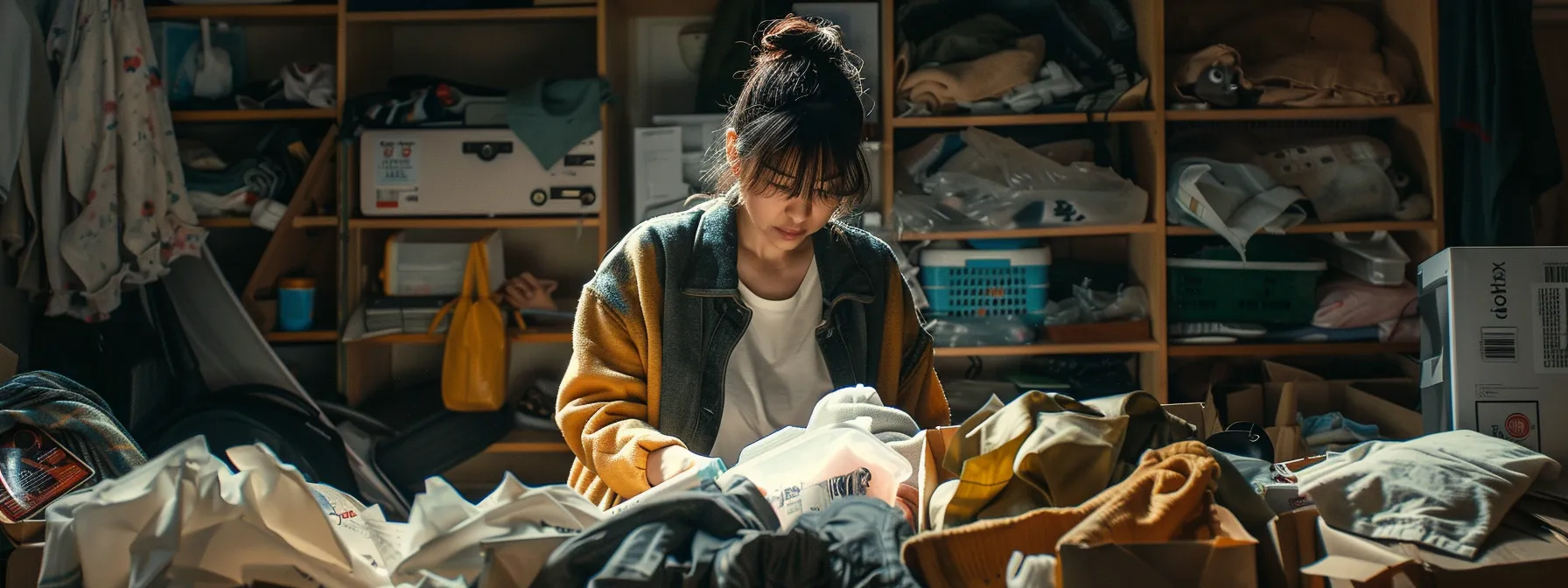
Declutter and Organize Before Packing
To achieve an effortless local move, I recommend sorting your belongings into clear categories: Keep, Donate, or Dispose. Hosting a garage sale is a practical way to reduce clutter while potentially earning a little extra cash. It’s also essential to recycle or safely dispose of unwanted items. By organizing your inventory effectively, you can streamline packing and ensure that your new home is filled only with items that truly matter.
Sort Items by Keep, Donate, or Dispose Categories
As I prepare for moving day, I make it a priority to sort my belongings into three categories: Keep, Donate, or Dispose. This systematic approach helps me focus on what I genuinely need and want in my new home, reducing unnecessary clutter. If I find items in good condition that I no longer use, I consider donating them to local charities, while keeping important items like medication accessible for the move. For things that I’m unsure about or can’t part with just yet, I can easily identify self-storage as an option and include these decisions in my moving checklist, ensuring I meet my landlord‘s requirements regarding the state of my former residence.
Host a Garage Sale to Reduce Clutter
Hosting a garage sale is an effective way to reduce clutter before your local move. By gathering items you no longer need, you can not only declutter your space but also potentially earn extra cash to put toward your moving expenses. I’ve found that advertising through local community boards or online platforms can attract more buyers, and I often suggest donating unsold items to a food bank or local charity. This not only lightens the load for your Fixed Rate Moving but also contributes positively to the community. Always check FMCSA Resources and the Better Business Bureau for reliable moving companies if you need assistance with transport after the sale.
Recycle or Safely Dispose of Unwanted Items
When decluttering before a move, I always prioritize recycling or safely disposing of unwanted items. Not only does this streamline my packing process, but it can potentially lead to tax deductions if the items are donated to eligible charities. Keeping track of these donations can also be beneficial when preparing my tax return, as I can itemize the contributions and benefit financially while helping my community.
Organize Belongings for Efficient Packing
When I prepare for packing, I always emphasize the importance of organizing my belongings in a way that streamlines the entire moving process. By grouping similar items together and using clearly labeled boxes, I can find what I need quickly, reducing stress on moving day. I’ve found that keeping essentials—like toiletries and important documents—easily accessible not only makes unpacking more manageable but also ensures I have everything I need right when I need it.
Once you’ve sorted through your belongings, it’s time to tackle the packing. Focus on one room at a time; it makes the process clearer and smoother.
Pack Room by Room for Efficiency
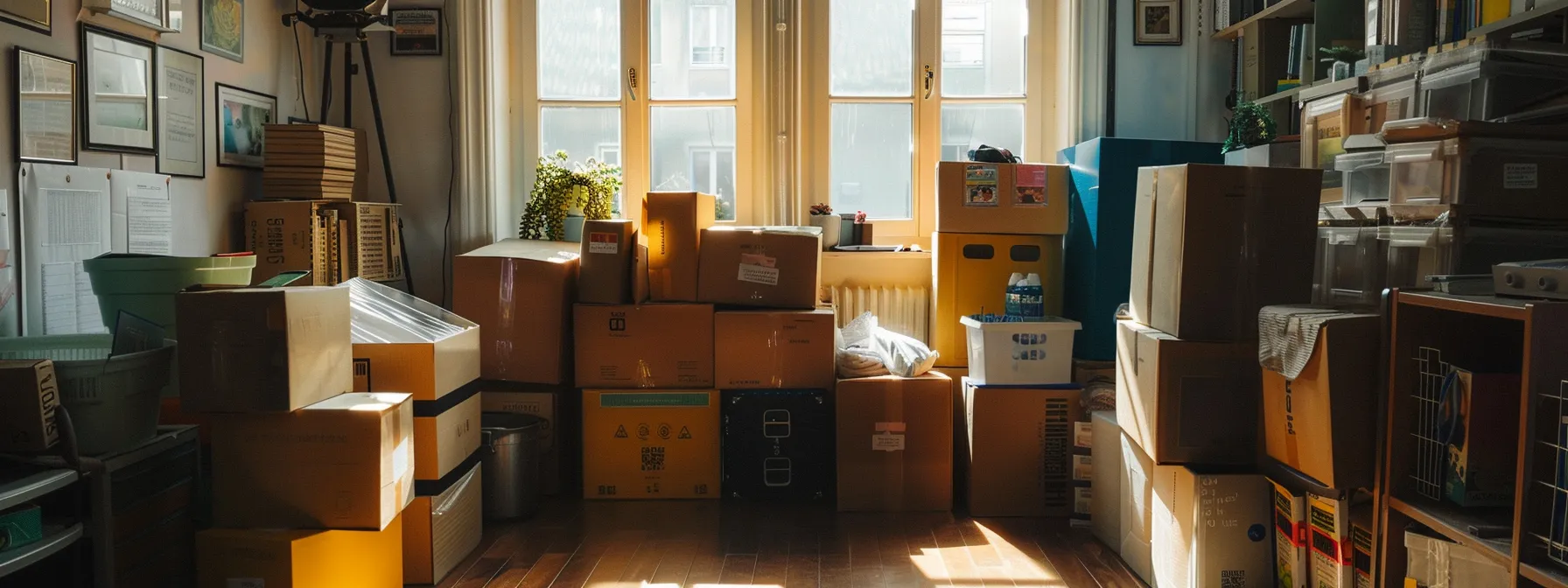
To achieve a smooth and efficient packing process during your local move, I recommend tackling one room at a time, starting with the least used areas and items. Clearly labeling boxes with their contents and destination will help streamline unpacking, while a color-coding system can provide easy identification. Keeping similar items together not only simplifies the unpacking process but also reduces confusion on moving day.
Begin With Least Used Rooms and Items
When I start packing for a local move, I always begin with the least used rooms and items, such as guest bedrooms or storage spaces. This approach not only helps me tackle the most challenging areas first but also means I won’t disrupt my daily routine. For example, by packing away seasonal decorations or infrequently used appliances early on, I create an organized environment that makes the rest of the packing process smoother and more efficient.
Label Boxes Clearly With Contents and Destinations
When I pack for a local move, I make it a point to label each box clearly with its contents and the room it belongs to. This simple step saves time and frustration during the unpacking process, allowing me to find essential items quickly. For example, by writing “Kitchen – Pots and Pans” on the box, I can easily identify what I need as soon as I arrive at my new home, ensuring that nothing important gets misplaced or overlooked.
Use Color-Coding Systems for Easy Identification
Using a color-coding system for your packing can significantly simplify your moving experience. I recommend assigning a different color to each room—like blue for the kitchen and green for the living room—to make identification a breeze. By placing colored stickers on the boxes and corresponding tape on the doors of your new home, I’ve found that it becomes easier to direct movers and set up your new space quickly, reducing confusion and enhancing efficiency during unpacking.
Keep Similar Items Together to Simplify Unpacking
When I pack for a local move, I always focus on keeping similar items together, as this strategy significantly simplifies unpacking. For example, I ensure that all kitchen utensils, pots, and pans are packed in the same box, so when I arrive at my new home, I can easily locate everything I need to make a meal. This method not only helps me save time but also reduces the stress of searching through multiple boxes, making my transition to the new space more efficient and pleasant.
Packing room by room brings a sense of order. But don’t ignore how you protect your belongings; the right techniques make all the difference.
Protect Your Belongings With Proper Packing Techniques
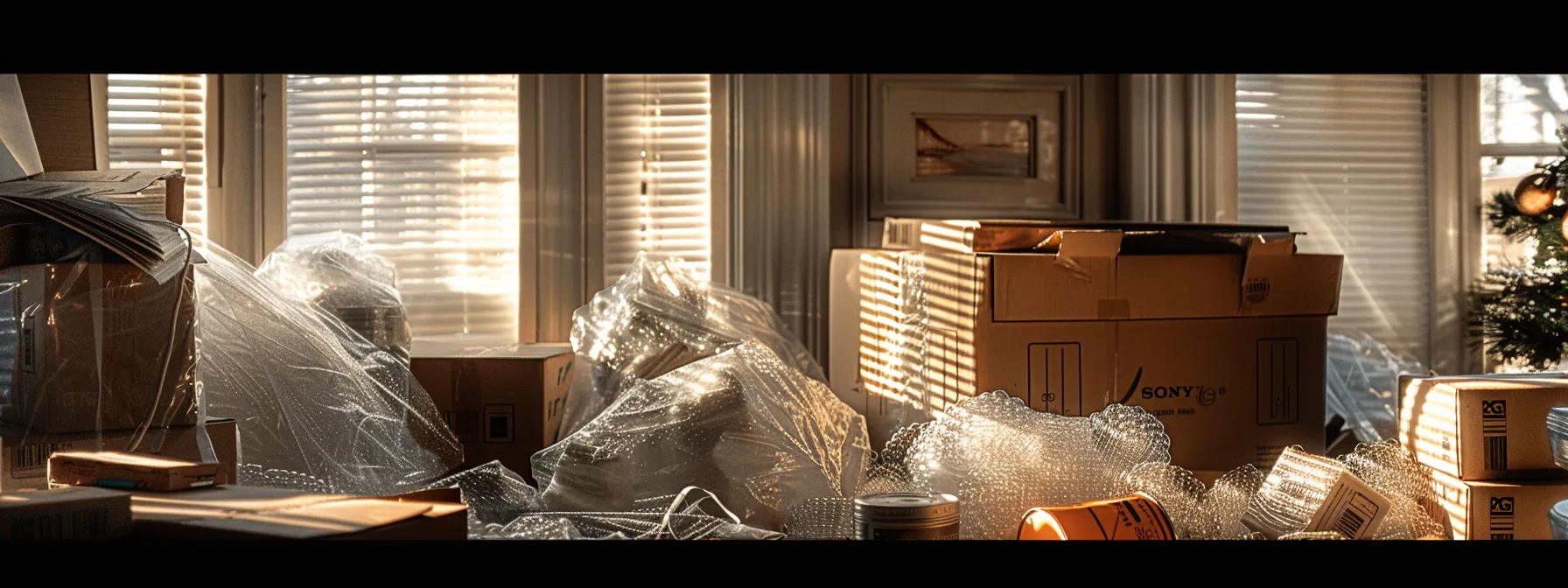
Protect Your Belongings With Proper Packing Techniques
To ensure a smooth local move, it’s essential to protect your belongings using effective packing techniques. I always make it a priority to wrap fragile items carefully to prevent damage and use appropriate padding for furniture and appliances. Securing boxes with quality packing tape is vital, and packing heavy items in small boxes helps avoid overloading. Let’s explore these methods in detail to safeguard your possessions during the move.
Wrap Fragile Items Carefully to Prevent Damage
When wrapping fragile items for your local move, I always prioritize using high-quality packing materials to ensure maximum protection. Starting with bubble wrap or foam padding, I carefully encase each fragile object, like glassware or artwork, to prevent any movement during transport. Additionally, I recommend labeling these items as “Fragile” to alert movers to handle them with care, which further reduces the risk of damage during the moving process.
Use Appropriate Padding for Furniture and Appliances
When packing furniture and appliances for a local move, I always ensure to use the right padding to safeguard them against potential damage. I find that thick moving blankets and bubble wrap provide excellent cushioning for items like sofas, televisions, and refrigerators. By properly securing these padded materials, I minimize the risk of scratches or dents, ensuring my belongings arrive at my new home in perfect condition:
| Item | Packing Method |
|---|---|
| Sofas | Wrap in moving blankets and secure with straps. |
| Televisions | Use bubble wrap and place in a TV box. |
| Refrigerators | Unplug, clean, and pad with moving blankets. |
Secure Boxes With Quality Packing Tape
Securing your boxes with quality packing tape is a critical step in protecting your belongings during a local move. I’ve learned that using a sturdy tape helps ensure that boxes stay closed, preventing contents from spilling out or becoming damaged. When I tape my boxes, I make sure to apply multiple strips across both the top and bottom seams to reinforce them, especially on heavier boxes that contain more fragile items.
- Choose heavy-duty packing tape for strength.
- Apply at least three strips of tape on the top and bottom of each box.
- Ensure the tape is securely pressed down to avoid peeling.
- Label each box for easy identification after moving.
Pack Heavy Items in Small Boxes to Avoid Overloading
When packing for a local move, I always recommend using small boxes for heavy items to prevent overloading and potential damage during transport. By keeping the weight manageable, I ensure that each box can be lifted easily and securely, minimizing the risk of accidents or injuries. For example, I often pack books, kitchen appliances, or tools in these smaller boxes, which not only protects the contents but also makes unpacking significantly easier when I arrive at my new home.
Packing was just the beginning. Now, it’s time to focus on the essentials that will make moving day smooth and successful.
Prepare for Moving Day Essentials
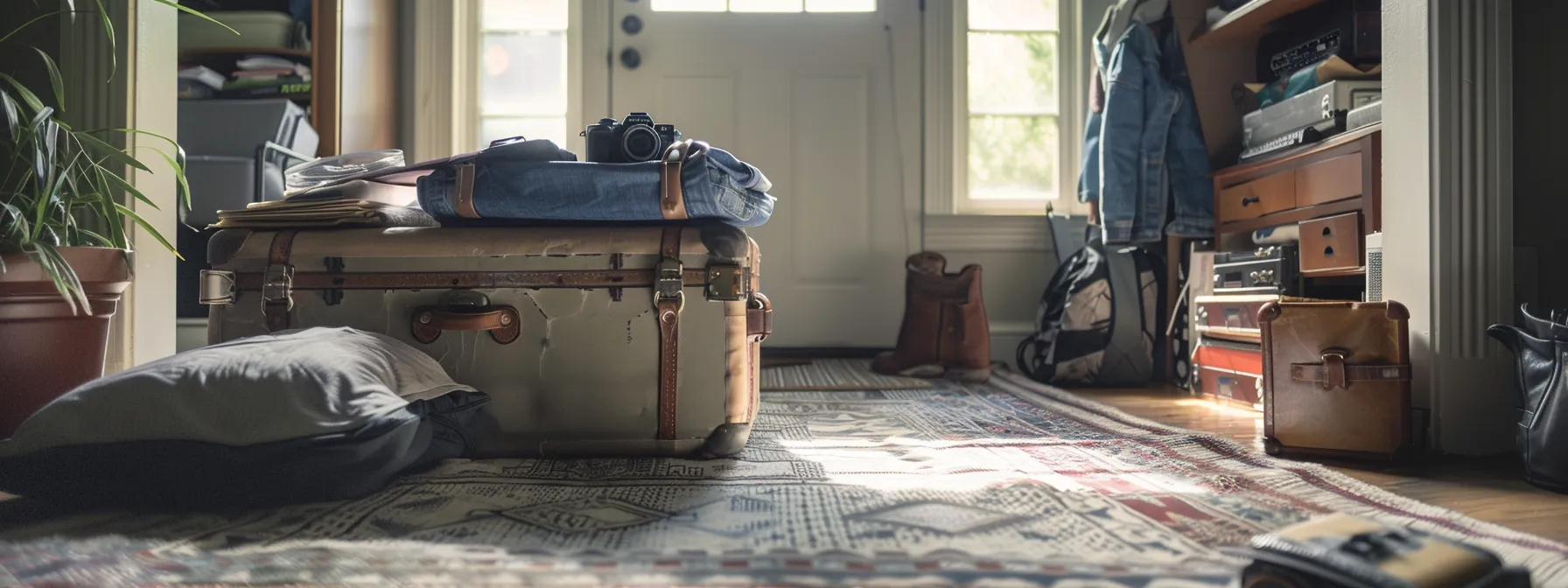
Prepare for Moving Day Essentials
To ensure a smooth moving day, I focus on packing strategically. It’s essential to pack an overnight bag with necessary items to simplify my first night in the new place. Keeping important documents easily accessible is crucial. I also make sure to charge electronics and prepare chargers ahead of time. Additionally, arranging care for children and pets on moving day minimizes distractions and stress. Each of these steps lays the foundation for a seamless transition.
Pack an Overnight Bag With Necessary Items
Packing an overnight bag with necessary items is a vital step for a smooth transition during a local move. I always include essentials like toiletries, a change of clothes, and any medications I may need. This ensures that my first night in my new home is comfortable and stress-free, without having to rummage through boxes for the essentials.
| Item | Details |
|---|---|
| Toiletries | Ensure you have basics like toothbrush, toothpaste, and soap. |
| Change of Clothes | Pack comfortable clothes for moving and relaxing. |
| Medications | Keep any prescription medications in your overnight bag. |
| Chargers | Don’t forget chargers for your electronics. |
Keep Important Documents Accessible
When preparing for moving day, I always prioritize keeping my important documents accessible to avoid any last-minute stress. I recommend placing vital paperwork—such as identification, bank statements, and medical records—in a dedicated folder or a zip-top bag that I can easily grab on moving day. This practice ensures that all essential documents are within reach, which allows me to focus on the logistics of the move without worrying about misplacing anything important.
Charge Electronics and Prepare Chargers
On moving day, I make it a point to fully charge all my electronics and prepare the necessary chargers ahead of time. This step is crucial because it ensures that my devices are ready for immediate use once I arrive at my new home. I also keep chargers easily accessible in my overnight bag to avoid the frustration of searching through packed boxes when I want to connect my phone or laptop.
Arrange Care for Children and Pets on Moving Day
Arranging care for children and pets on moving day is crucial for maintaining a stress-free environment. I often recommend enlisting the help of family members or friends to look after kids and pets, keeping them away from the hustle and bustle of the move. Alternatively, I suggest hiring a local pet sitter or finding a daycare for kids, which allows me to focus on the logistics of the move without distraction:
- Enlist help from family or friends for supervision.
- Consider hiring a pet sitter for your animals.
- Look for local daycare options for children.
- Keep children engaged with activities away from the moving area.

